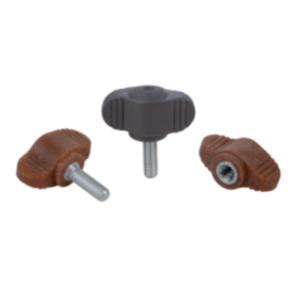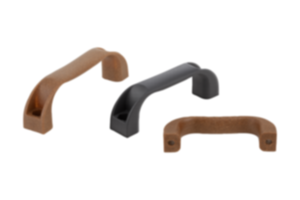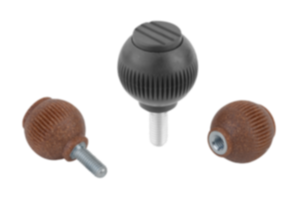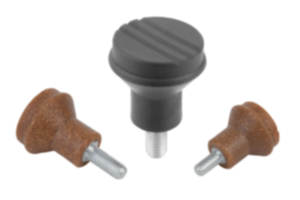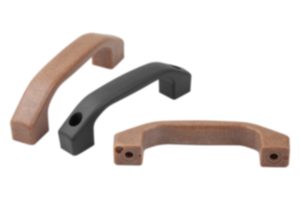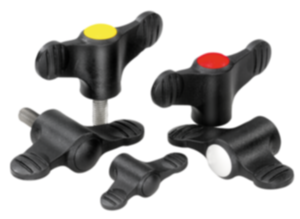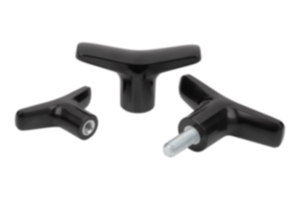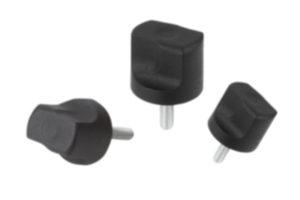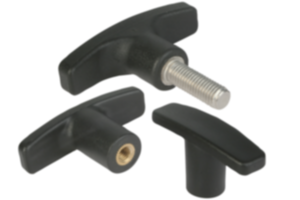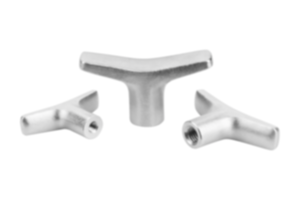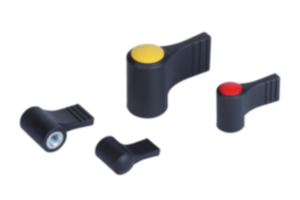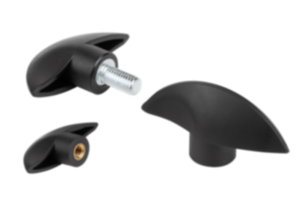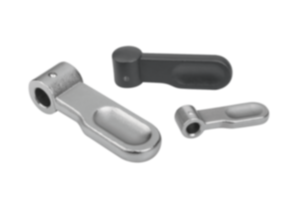Transport technology
Material handling by KIPP
The category "material handling" includes various product families:
- Wheels and castors
- Ball transfer units
- Lifting points
The product families in this category are mainly used in sectors such as transport technology, logistics, mechanical engineering, control cabinet construction and conveyor systems. Wheels and castors, including ball transfer units, are used to transport components. Fastening and retention systems such as ring bolts are used as transport and lifting aids when moving items.
Wheels and castors
Some objects are so integrated into everyday life that we don't even think about them any more. Wheels and castors are so inconspicuous and small, but it is impossible to imagine everyday industrial work without them.
Be it swivel castors, fixed castors or equipment wheels - you can find all types of wheels and castors here. Each individual castor has certain characteristics, be it stability or manoeuvrability. With various types, materials, sizes, strengths and properties such as temperature resistance, castors form the basis of material handling.
Calculating the load capacity of wheels and castors
A castor or wheel set consists of four castors/wheels. When four castors or wheels are used, it must always be assumed that, due to external influences such as floor unevenness one castor/wheel may fail to support the load. The load capacity (total load capacity) of wheels and castors is therefore always calculated using only 3 of 4 castors.
For information on permissible loads for a castor see product details. This value applies per castor and must be multiplied by 3 for the total load capacity. The result of the calculation is the total load capacity of the chassis.
The different wheel and castor styles
Wheels and castors can be used in all kinds of areas. They provide users with more flexibility in work processes and simplify their day-to-day work - be it as castors for hospital beds, lattice carts or transport trolleys.
The workplace environment imposes many requirements on the properties of wheels and castors. However, one requirement stays the same - castors have to be sturdy and able to endure a lot!
In cleanroom environments, castors have to be cleaned, disinfected or sterilised again and again. Castors should therefore be durable and hard-wearing. Other areas require castors that can bear very heavy loads.
Besides appliance castors, the KIPP range includes: swivel castors, fixed castors and the following castor types:
- high temperature castors (temperature range 35 to 260 °C)
- heavy-duty castors
- castors for cleanrooms or the hygienic sector
The range not only includes different castor types, but also different materials and sizes. We offer the suitable wheels and castors for your application.
Swivel castors or fixed castors
Swivel castors make it easy to manoeuvre objects around bends and through gangways. The castors are particularly known for their manoeuvrability. They can therefore be found on shopping trolleys, hospital beds or other wheeled appliances. Even in limited spaces, swivel castors can be steered in all directions. However, swivel castors are not suitable for longer straights.
This is where fixed castors come into play. Fixed castors do not swivel and are therefore perfect for straights. They can only move in a straight line and so remain safely on course.
As routes are seldom only straight lines and there are always corners in all kinds of places, a combination of swivel castor and fixed castor is often used. In most cases two swivel castors are installed at the front and two fixed castors at the rear. So you benefit from the properties of both.
Apparatus swivel castors
Apparatus swivel castors are often used for light applications with a load capacity of up to 280 kg. In the heavy duty version castors can be used to a permissible load of up to 400 kg.
Apparatus castors are available as swivel castors or fixed castors. The wheels are made of solid rubber or thermoplastic rubber. The aforementioned treads have different properties.
Typical applications for apparatus castors are moving large appliances, display stands or medical devices. Medical applications in particular require castors that are electrically conductive in order to protect devices from electrical discharge.
Ball transfer units
Ball transfer units are used wherever heavy or sensitive objects need to be transported over short distances. They are very versatile and can therefore be used in a wide variety of areas.
Ball transfer units are used in e.g. presses, measuring instruments or complex conveyor systems.
Design of a ball transfer unit
A ball transfer unit consists of several elements. A roller ball, bearing balls, ball seat and a housing.
The housing forms the basis of the ball transfer unit.
The housing contains the ball seat, which serves as a track for a number of bearing balls. On top of the bearing balls is the roller ball.
The roller ball forms the centre of the ball transfer unit. When the roller ball is moved (rotated), the bearing balls roll over the ball seat. This design enables the roller ball to rotate in any direction without friction.
In most applications, several ball transfer units are mounted on one level. This makes it easy to rotate and direct heavy loads as required.
Styles of ball transfer units in the KIPP range
Ball transfer units are needed in different materials depending on requirements. The KIPP range includes ball transfer units with housings made of stainless and electro zinc-plated steel. Furthermore, ball transfer units with bearing balls made of steel, stainless steel or polyamide (POM) are also available.
In some models, a felt seal is fitted to prevent dirt from entering the ball housing.
Besides ball transfer units with threaded pins there are also ball transfer units with spring elements or those with solid steel housings available.
With load ratings of 50 N to 15,000 N, KIPP ball transfer units cover a wide range of applications.
Lifting points
Crane hooks, ring bolts, swivel ring bolts and shackles are classed lifting equipment. Ring bolts are also used as anchor or fastening elements. They are used when high loads (tension or weight) have to be handled.
The ring bolt has a ring-shaped eyelet and is therefore sometimes wrongly called an eyebolt. This ring forms the slinging point for lifting belts, chains, winch cables, round slings and more. The ring bolt is screwed into a tapped hole for transporting heavy machine components or tools.
Styles in the KIPP range
In addition to ring bolts, the KIPP range also includes ring nuts, swivel ring bolts, hoist rings, and shackles.
All products are available with different thread sizes, materials and diameters.
Ring bolts acc. to DIN 580 are available in different grades of stainless steel. The CE marking and the higher load-bearing capacity distinguish them from ring bolts, which are manufactured similar to DIN 580.
Ring bolt and hoist ring materials
The products in question are available in steel and stainless steel. The load capacities are the same for both materials.
The material only differs in that:
- steel due to its solid structure, along with a higher weight being the first choice and
- stainless steel is the softer metal, which is characterised by a lower weight.
The stainless steel products are divided into different grades:
- Stainless steel 1.4301 is suitable for everyday outdoor applications and is very durable
- Stainless steel 1.4401 is suitable for use in coastal regions as its special alloy is resistant to sea water.


